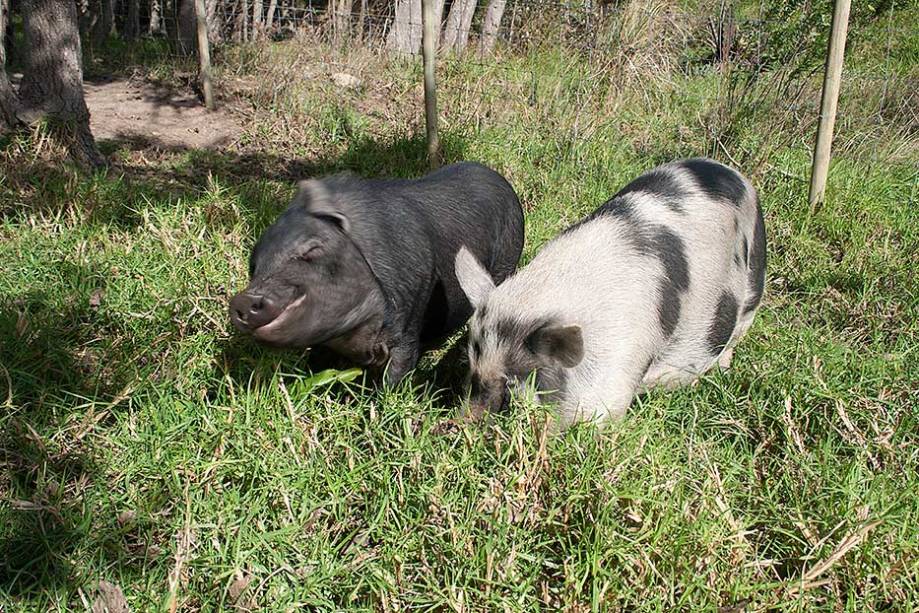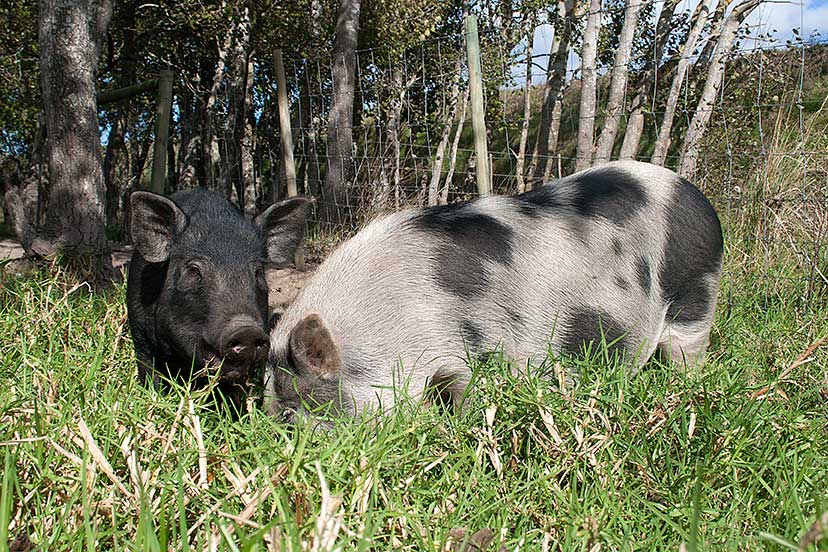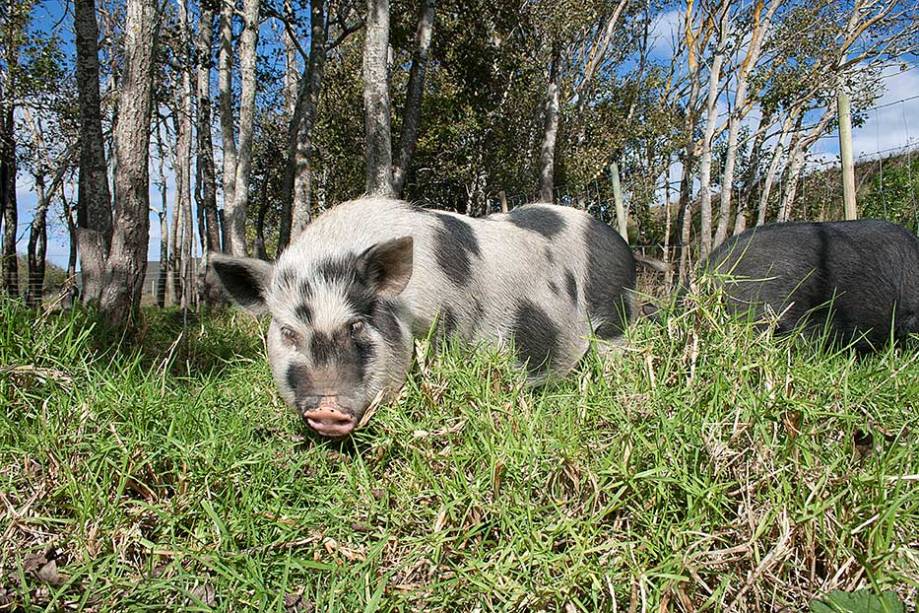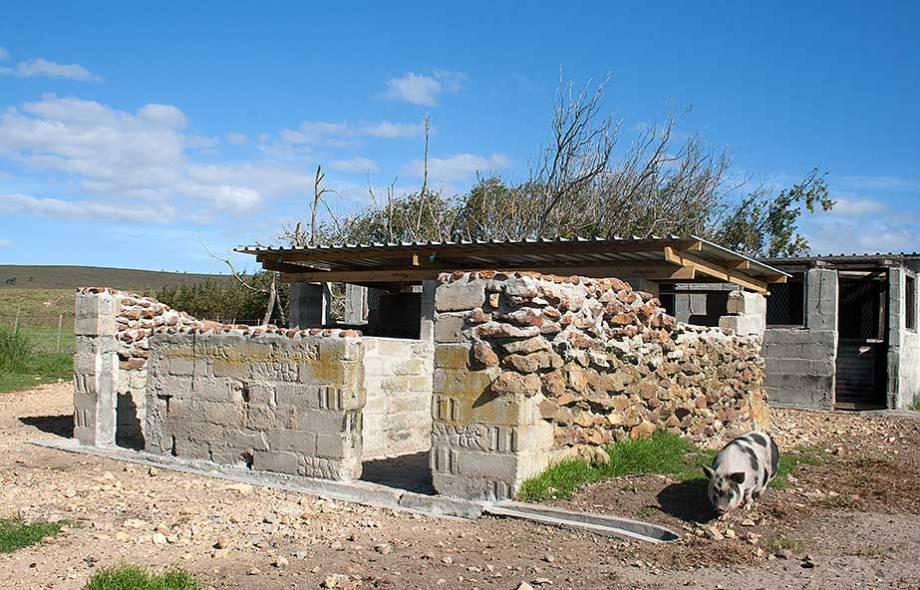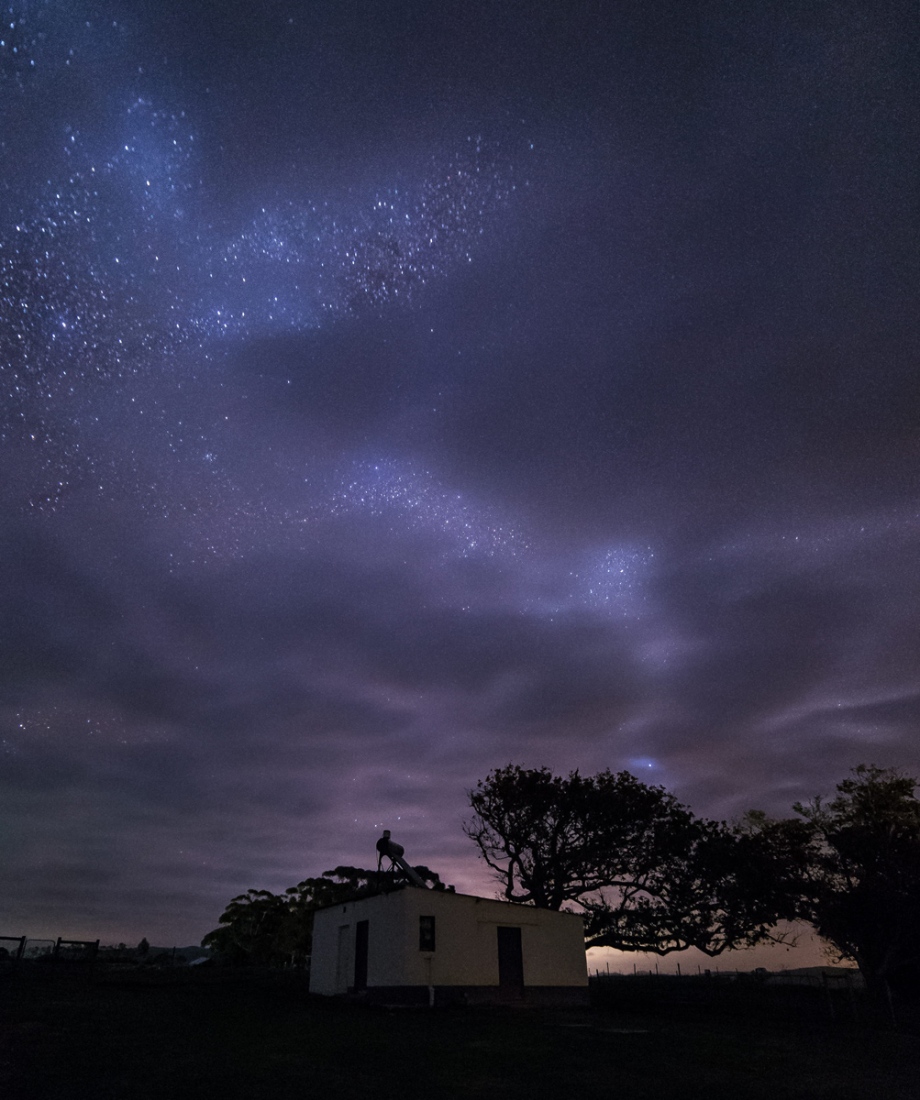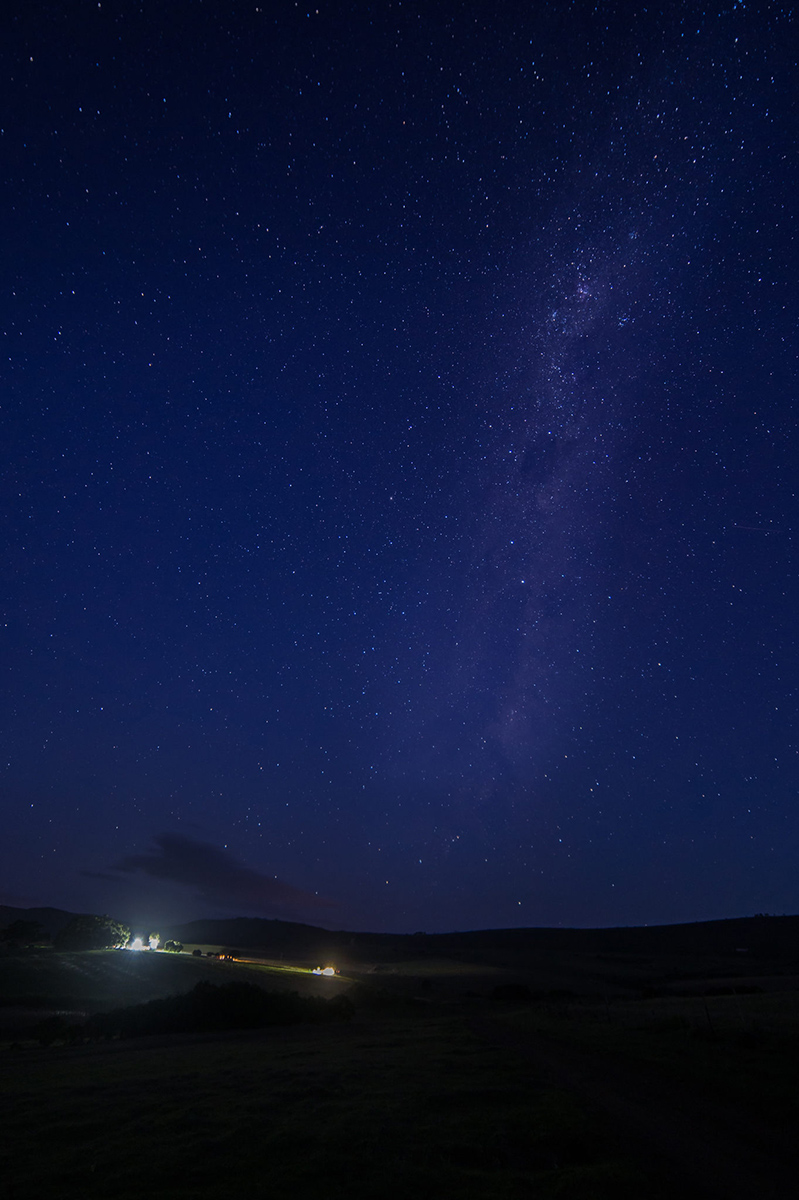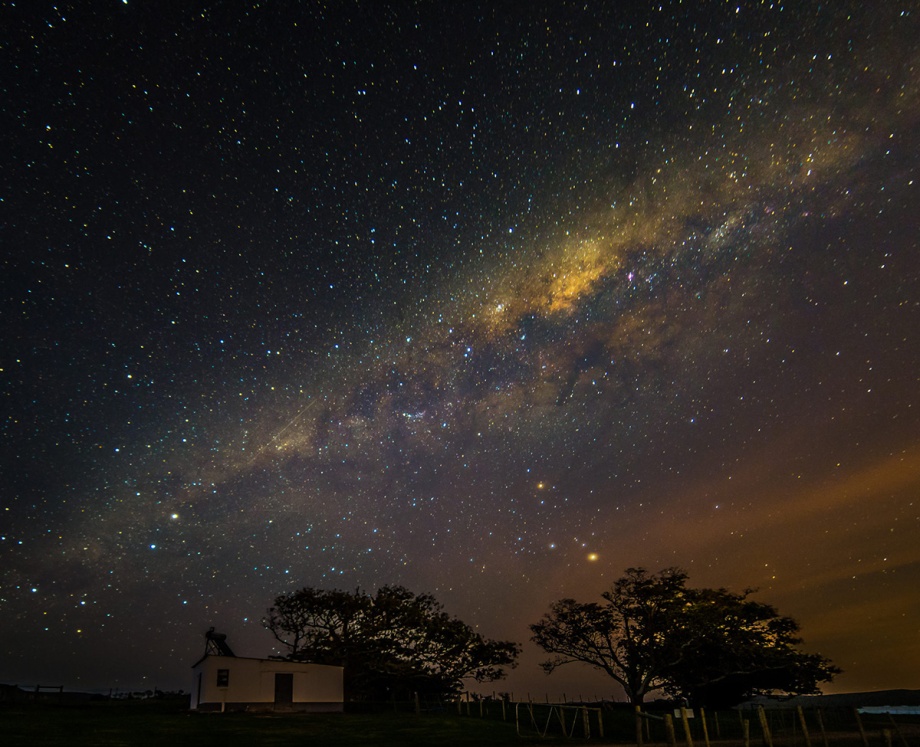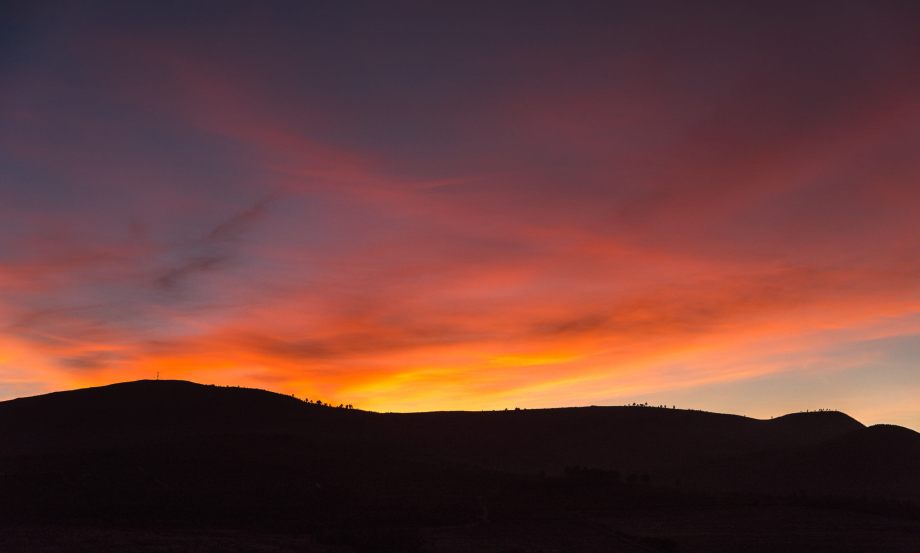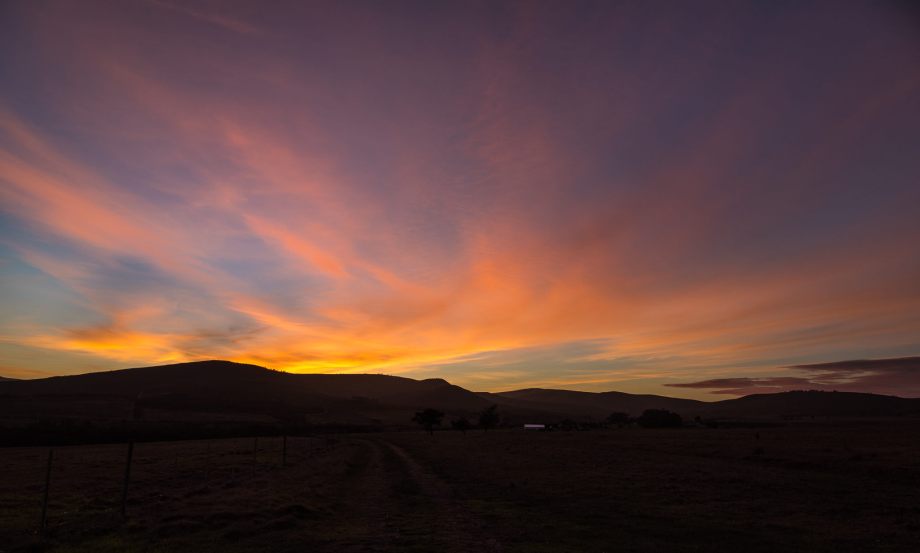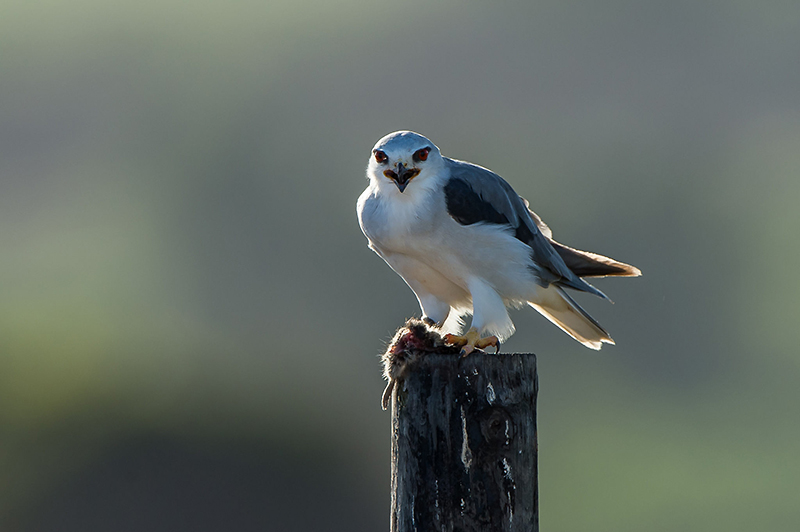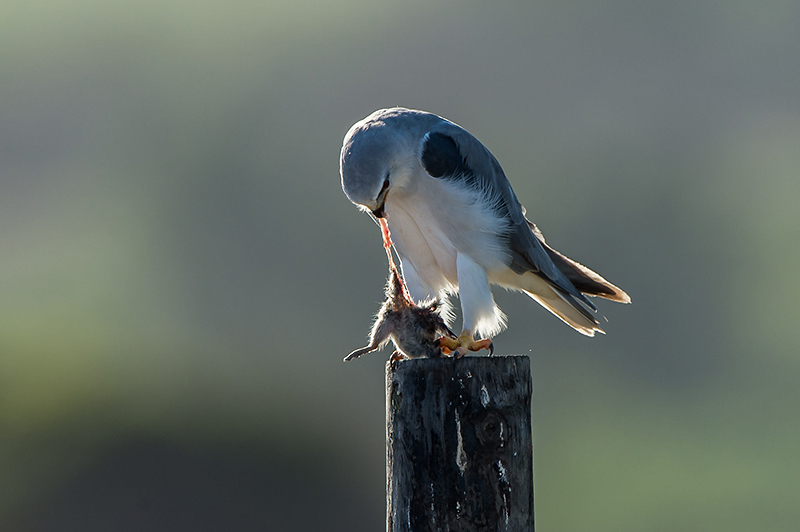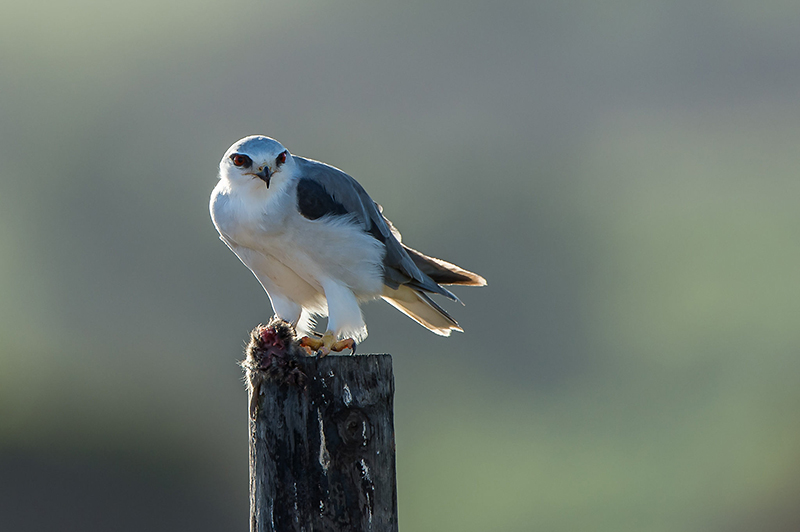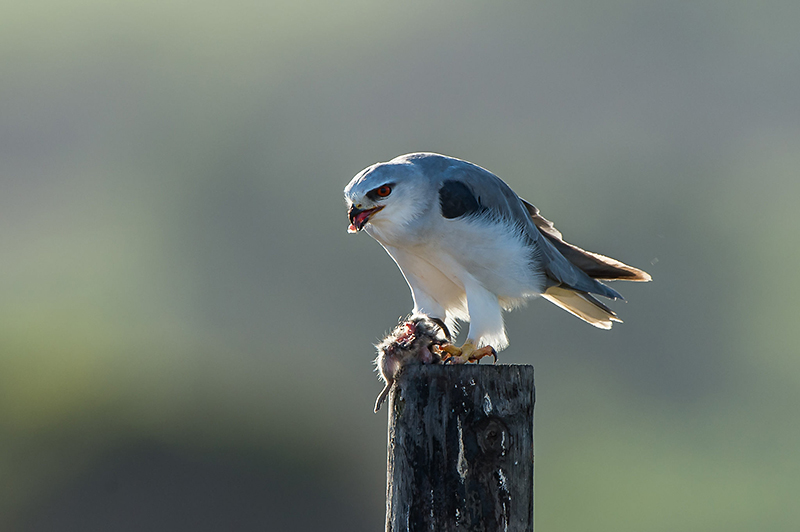Recently, Mr Potts and Mrs Belly, two pot-bellied pigs, joined our animal family on Landmeterskop. Although their very distant ancestors came from China, these two were born on a smallholding near Teslaarsdal, Caledon. In honour of their arrival, the pigsties on our farm had been restored! As pigs, and especially pot-bellied pigs, are very affectionate animals that love companionship and body closeness, and are often kept as pets. They can weigh anything from 43 to 136 kg, and can live up to thirty years. This pair had no trouble settling in with our other pigs, the Kolbroeks, and the alpacas, goats, chickens and human visitors. They are indeed very happy and thriving!
Monthly Archives: May 2015
Night Sky over Landmeterskop by Stephen Hammer
I was really looking forward to being able to photograph the night sky and Milky Way as the farm is an ideal venue to do this. Unfortunately, the weatherman didn’t play the game and we arrived at the farm in heavy overcast conditions and this made for very challenging photography light. After much digging through the archives in my head, I eventually came up with a game plan to show you guys what I was seeing… shoot the stars through the clouds!! Now that is not a photograph you often get to see.
These pics were all taken in and around the yard around the Duck Pond Room.
This series shows the start and prep for a photograph of the Milky Way over the cottages. First pic is to get my framing right, the second shows the start of the Milky Way, and the last pic is the Milky Way “waking up”. I always think of this as God sprinkling his blessings on the farmers’ fields. This “tower” of stars is truly impressive. After the last photograph I was well and truly frozen (my own fault as I did not bring the proper clothing) and went off and had my supper
These photographs were taken just before sunrise on Sunday morning @ ± 06h15. I was busy getting ready to go out and look for the Bat Eared Foxes, when I glanced out the window and saw this beautiful “Dragon of Stars”. I knew I only had a few minutes to get these photographs before there was too much light and I would not be able to photograph this.
All these photos were taken by Stephen Hammer, Cape Town based wildlife photographer, and are copyrighted. We are very excited that Steve has agreed to do a series of photography courses in future here on Landmeterskop. We shall post the details of these soon!
For more of Steve’s work, visit his website: http://stephenhammer.co.za
Black-shouldered Kite (Elanus caeruleus) & the field mouse!
Cape Town-based wildlife photographer Stephen Hammer and his wife, Lee-Anne, spent the weekend on Landmeterskop trying to capture our family of Bat-eared Foxes on camera. This first sequence of views was taken on the way to look for the shy little foxes on Sunday morning. It was truly beautiful to see… and quite cold up on the hill. The cold air is beautifully clear and haze-free. Winter is the time to photograph landscapes and Landmeterskop has some very good potential for this.
The little Bat-eared Foxes did not put in an appearance, although Steve and Lee-Anne searched for them late afternoons and early mornings! But, Steve was fortunate to get this magnificent sequence of a Black-shouldered Kite (Elanus caeruleus) eating a field mouse.
Black-shouldered Kite (Elanus caeruleus)
Afrikaans: Blouvalk
Black-shouldered Kite (Elanus caeruleus)
Afrikaans: Blouvalk
The Black-shouldered Kite is a small, graceful raptor and the most voracious eater in the raptor family. It needs to consume up to 25% of its body mass every day – that is the equivalent of about two mice. This means each bird probably kills around 700 mouse-sized animals a year.
Roberts Birds of Southern Africa VII estimates there are about 100 000 Black-shouldered Kites in southern Africa, so if we assume each bird takes two mice a day, that adds up to about 70 million mice being consumed by this species alone every year. Think of how many mice there are out there that are not being eaten!
It prefers the grasslands probably because prey is easier to see than in the more densely-wooded lowveld.
Black-shouldered Kites are solitary hunters by day, yet often roost communally at night. They usually spend between 4 and 10 hours a day in flight, but also often hunt from a perch.
One of their characteristics is to hover (air-perch) in one place above the ground searching for prey. Black-shouldered Kites range widely. The longest range so far recorded was that of a bird ringed in the former Transvaal and recovered in northern Mozambique, 915km away. Another bird ringed at the same time was recovered in the opposite direction – in the Cape, 645km away.
Stephen’s website: http://stephenhammer.co.za
Steve also took beautiful photos of the night sky over Landmeterskop… and we shall post some of them soon! And we are very excited to announce that Steve has agreed to do a series of photography courses in future with us.



